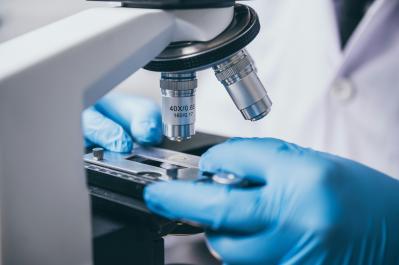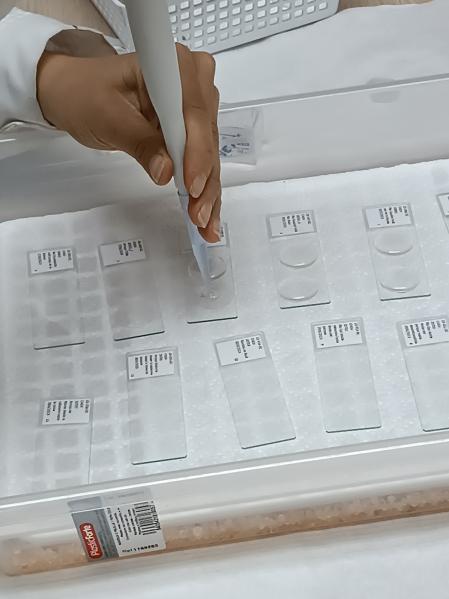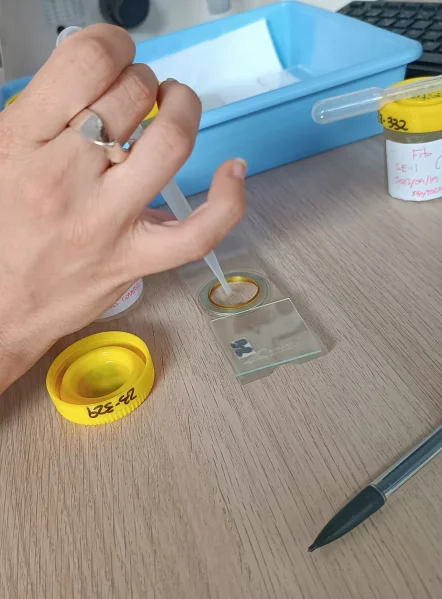
Environmental Diagnosis and Management
At Tentamus LAB, we work on various aspects of environmental diagnosis and management:
- Environmental diagnosis of aquatic ecosystems.
- Assessment of the ecological status of inland water bodies in accordance with the Water Framework Directive.
- Application of biological indices based on phytoplankton and benthic diatoms.
Our passion for our work keeps us constantly evolving. We believe in the continuous improvement of our work processes and in the ongoing expansion of our knowledge.
In this sense, we are committed to the quality of our results and to a job well done, always thinking about the benefit to the environment, which, after all, is what drives us.
Phytoplankton Analysis
We assess the ecological status of water bodies using biological indicators and provide specialised reports that reveal the ecological quality of lakes and reservoirs. We detect and characterise algal blooms, including cyanobacteria and dinoflagellates, for a comprehensive and accurate analysis of the aquatic ecosystem.
- Microscopic analysis of phytoplankton in inland waters: lakes, wetlands, reservoirs, etc., in accordance with the following standards:
- UNE-EN 15204:2007 Water quality – Guide for the enumeration of phytoplankton by inverted microscopy (Utermöhl technique).
- UNE-EN 16695:2016 Water Quality – Guidance for the estimation of phytoplankton biovolume.
- Calculation of cell abundance and algal biovolume by species, taxonomic groups and total population.
- Calculation of ecological quality indices: IGA, InGA, % cyanobacteria, etc.
- Assessment of the ecological status of lakes and reservoirs according to the biological indicator phytoplankton and calculation of the EQR following the guidelines of the Water Framework Directive.
- Interpretation of results and drafting of reports on bioindication and ecological quality of lakes and reservoirs.
- Detection and characterisation of algal blooms: cyanobacteria, dinoflagellates, filamentous algae, etc.
Analysis of Benthic Diatoms
- Microscopic analysis of benthic diatoms in continental waters (rivers and lakes) following the methodology established in the following standards:
- UNE-EN 13946:2004 Water quality – Guidance for routine sampling and pretreatment of benthic diatoms from rivers.
- UNE-EN 14407:2005 Water quality – Guidance for the identification, counting and interpretation of benthic diatoms in rivers.
- Sampling, pre-treatment and mounting of permanent preparations.
- Identification and counting of valves at species and variety level whenever possible.
- Calculation of ecological quality indices: IPS, CEE, IBD, EPI-D, TDI, etc.
- Assessment of the ecological status of river water bodies according to the benthic diatom biological indicator, calculation of the EQR, following the guidelines of the WFD.
- Interpretation of results and drafting of reports on bioindication and ecological quality of river water bodies.
- Analysis of diatoms for application in paleolimnology studies.

Analysis of Cyanobacteria and Cyanotoxins
- Characterisation of potentially toxin-producing cyanobacterial blooms.
- Calculation of cyanobacterial abundance and identification of potentially toxin-producing species. Assessment of water quality for recreational use or public supply based on cyanobacterial abundance, according to World Health Organisation (WHO) guidelines.
- Analysis of cyanotoxins in water for recreational use or public supply.
Intercomparisons and Reference Materials
The procedures used by our phytoplankton intercomparisons are developed according to the following standardised norms:
- CEN EN 15204:2006 Guidance standard on the enumeration of Phytoplankton using inverted microscopy (Utermöhl technique).
- EN 16695:2015 Guidance on the estimation of phytoplankton biovolume.
- ISO 13528:2016 Statistical methods for use in proficiency testing by interlaboratory comparison.
Our intercomparison exercises consist of three tests:
- Taxonomic identification
- Cell counting and cell density calculation
- Biovolume calculation
Certified reference materials
These types of samples are relevant to the annual quality systems programme as they enable the control of tests in various aspects:
- Validation
- Precision
- Accuracy
- Staff training
- Reproducibility
Intercomparativo de análisis de fitoplancton de aguas continentales y diatomeas bentónicas
Este tipo de ejercicios de contraste con entidades externas son un requisito indispensable para el aseguramiento y control de la calidad de los resultados de los laboratorios.
La Directiva Marco del Agua es una de las razones más importante para el desarrollo de estos ejercicios. Uno de los requerimientos de la DMA para los laboratorios de análisis es la obtención de resultados de elevada calidad y homogéneos, de modo que sean comparables en toda la Unión Europea. Es, por tanto, una necesidad importante para los laboratorios la participación en ejercicios de intercomparación.
Las muestras proceden del medio natural, de modo que tanto la composición taxonómica cómo la densidad celular son las habituales en los ensayos de rutina de análisis de fitoplancton.

Our certificates attest to our experience, dedication and quality.
Freistaat Sachsen, Germany
Proficiency Test Benthic Diatoms.Freistaat Sachsen, Germany
Proficiency Test Phytoplankton.Environment Agency, Regional Government of Andalusia
Interlaboratory Benthic Diatoms.
Intensive courses and training
Intensive courses are offered in taxonomy, ecology, and the use of biological indicators of ecological quality in continental water bodies based on phytoplankton, cyanobacteria, or diatoms. Contact us for more information.